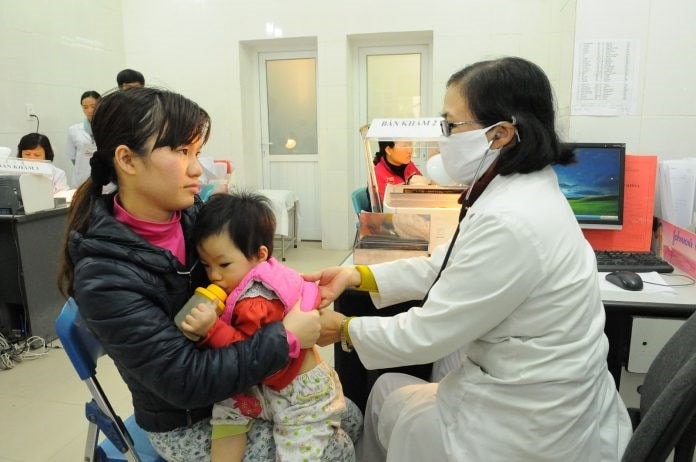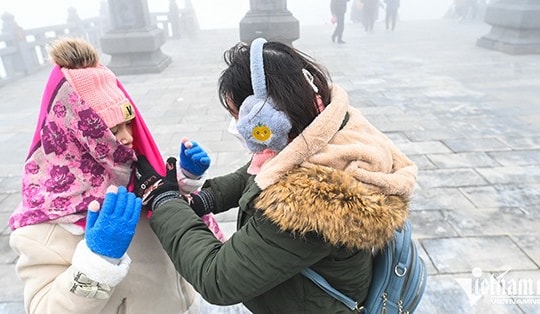Cold weather, mothers are advised of 4 'golden' positions to keep children warm
According to Associate Professor, Dr. Nguyen Tien Dung, pediatrician (Department of Pediatrics, Bach Mai Hospital), after each cold spell, the number of children hospitalized increases by 30-40% compared to normal days with common respiratory infections such as upper respiratory tract infections, bronchitis, and pneumonia. "It is not true that locking children in the house and "stuffing" them with lots of warm clothes will help them avoid illness."

After each cold spell, many children are hospitalized for respiratory infections. Illustrative photo
Associate Professor Dung said that the most common mistake parents make is to “keep” their children too warm and dress them in too many clothes. Many mothers, after taking their children to the hospital, wonder: “I don’t dare take my child anywhere, I keep my child warm carefully, why does my child still get a respiratory infection because of the cold?”. But that could be the “big mistake” that causes children to get cold.
“Children’s body temperature is not like that of adults, being too cold or too hot can easily make children sick. Because they are afraid that their children will be cold, parents often dress their children in a lot of clothes, even applying heat pads to them. At that time, children easily sweat on their backs, chests, and heads, and wet clothes will turn cold, leading to children catching colds and pneumonia,” said Associate Professor Dung.
In particular, many infants under one year old are kept in closed rooms with heaters, still wrapped in many layers of clothing and blankets, which can easily lead to pneumonia because “too warm makes cold”. In addition, being kept too warm can cause the baby to sweat, leading to dermatitis and itching, making the baby uncomfortable and restless.
According to Associate Professor Dung, there are 4 "golden" positions of children that must always be kept warm: Belly, Legs, Arms, Back. "I often see parents cover their children with masks and scarves very carefully around their necks for fear that their children will inhale cold air and get respiratory infections. However, if the mouth, nose, and neck are covered but the belly, legs, and arms are exposed, the child will still easily get cold" -Associate Professor Dung emphasized.
Advice for parents is to always dress children just enough in the room, if children go out, wear many shirts that can be taken off in a closed room so that children do not wear too many clothes when in a closed room.
If you find your child sweating, quickly take him/her into a closed room, slowly wipe the sweat, and remove some of his/her clothes. Do not quickly remove all of his/her clothes. It is very dangerous for a child to suddenly become cold from being hot.
According to Associate Professor Dung, there are 4 "golden" positions of children that must always be kept warm: Stomach, Legs, Arms, and Back. "I often see parents cover their children with masks and scarves very carefully around their necks for fear that their children will inhale cold air and get respiratory infections. However, if the mouth, nose, and neck are covered but the stomach, legs, and arms are exposed, the child will still be susceptible to cold" - Associate Professor Dung emphasized.
During cold weather, many parents avoid bathing their children, especially newborns and children under 1 year old. However, Associate Professor Dung said that they should still bathe regularly or at least wipe and clean their children's bodies with warm water. Because if they do not bathe, children are prone to itching, bacteria build up on their skin, and are more susceptible to illness.
To ensure safe bathing in the cold season, Associate Professor Dung advises parents to bathe their children in a closed room, and if possible, turn on the heater to warm the room before bathing the child. Bathe quickly and dry and warm the child quickly. Even when the child is sick, do not be lazy to bathe.
In particular, parents should increase nutritious foods, soft foods for children, and increase fruits to increase children's resistance to winter.


